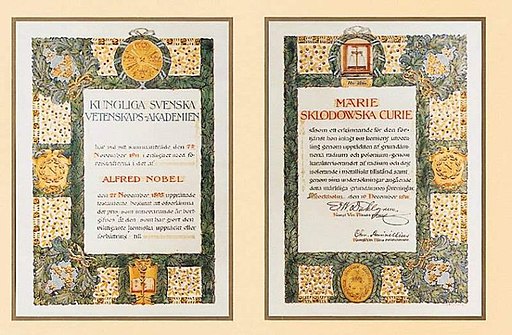When asked to name a female scientist, the first name on most people’s lips is Marie Curie.
Born in Warsaw, then part of the Russian Empire, Maria Sklodowska moved from her occupied homeland to Paris in 1891. She was encouraged in this by her sister, Bronia, who practiced medicine alongside her husband and herself dreamed of relocating to the land of liberty.

Here Marie continued her scientific education and met Pierre Curie, lively discussion and passionate interests lead to a deep affection between the two and they married in 1895.

Marie was one of the first scientists to investigate radioactivity after it was originally discovered by Henri Becquerel (1852-1908) in 1896. Pierre, fascinated by her work, dropped his own research, and together the Curies pioneered research into radioactive materials, discovering radium and polonium.
Sharing the Nobel Prize for Physics in 1903 with Becquerel catapulted them onto an international stage, particularly in light of Marie being the first woman to win a Nobel Prize.
Tragically, Pierre was killed in a street accident in Paris in 1906, however, Marie continued her research, becoming the first female professor at the Sorbonne.
She won a Nobel Prize for a second time in 1911, this time for Chemistry, making her the first person to have won two Nobel Prizes.

After the discovery of these new elements demand for them began to increase for scientific, medical and industrial research. The Curies had isolated radium from pitchblende in a laborious process that yielded only a tenth of a gram from a ton of ore. Curie established a Radium institute in Paris to continue her research, and as a base for the production of radium and other radioactive substances.
The new element quickly developed a reputation as a wonder-substance and a craze for radium therapies and home products saw multiple companies start marketing radium products in the first half of the nineteenth century. The vast array of radium items for sale included filters to make water radioactive, radium buttons, soap, and even toothpaste and make-up.

The dangers of radioactive substances only became widely understood later. Curie herself died in 1934 from illness related to years of exposure, and many of the young women who worked in factories painting radium onto clock surfaces would also suffer the effects of radiation poisoning.

Following her death, Marie Curie’s work continued to inspire scientists, and the effects of her discovery as are still being felt today, both through the use of Radium in cancer treatments and by providing a positive scientific role model for girl and women worldwide.